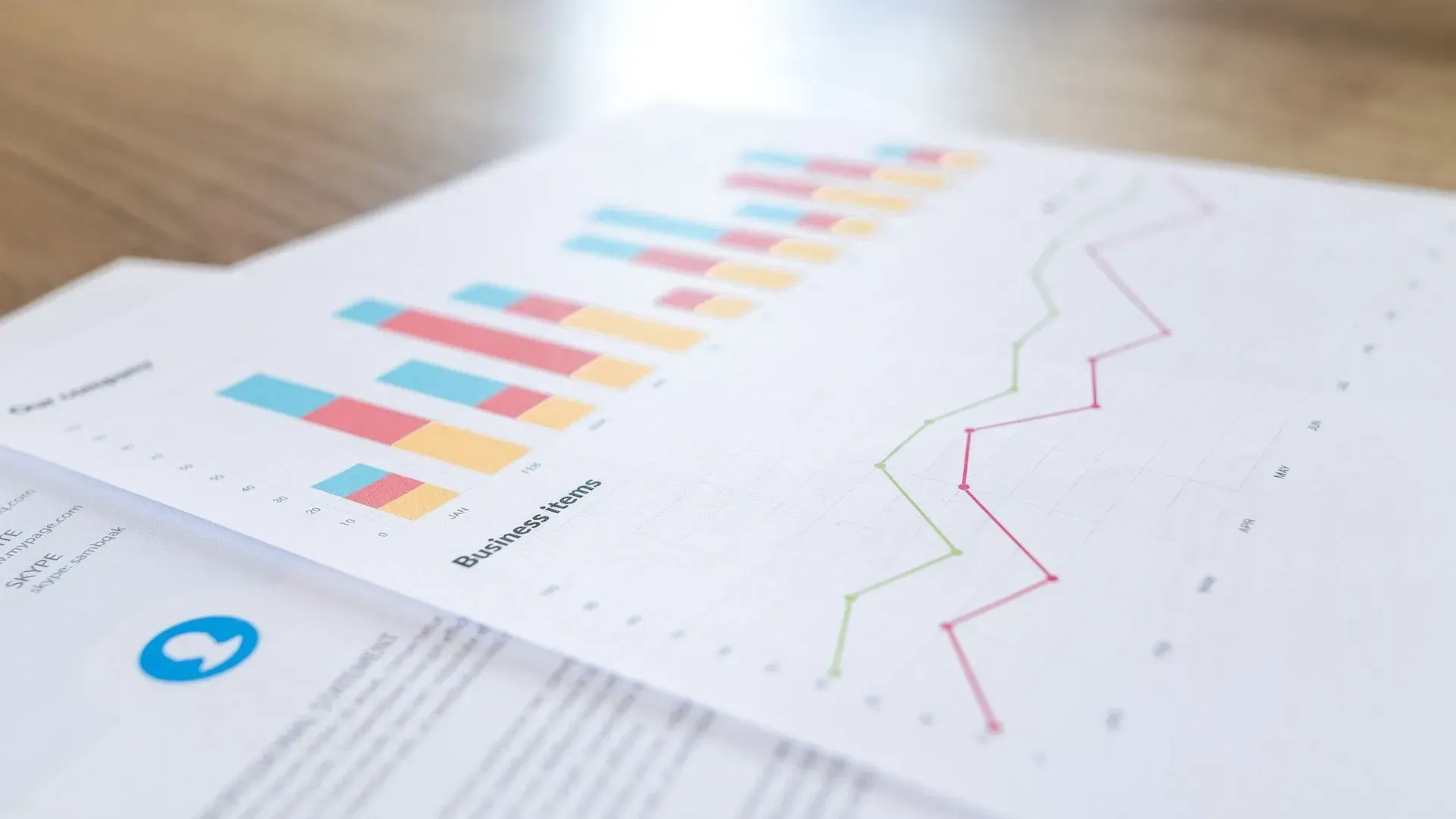The Power of Data Visualization in Driving Business Growth
In today's data-driven world, businesses generate and have access to vast amounts of data. However, the sheer volume of data can often be overwhelming, making it difficult for organizations to extract meaningful insights and make informed decisions. Data visualization is a powerful tool that can transform raw data into intuitive and actionable visual formats, enabling businesses to understand complex information quickly and effectively. By leveraging data visualization, companies can drive business growth through enhanced decision-making, improved efficiency, and better strategic planning. This article explores the various ways in which data visualization supports business growth and provides real-world examples of its impact.
Understanding Data Visualization
Data visualization is the graphical representation of data using visual elements like charts, graphs, maps, and dashboards. It helps to illustrate data patterns, trends, and correlations that might be missed in traditional reports or spreadsheets. By converting complex datasets into visual formats, data visualization makes it easier for stakeholders at all levels to comprehend and interpret information.
Enhancing Decision-Making
1. Simplifying Complex Data
One of the primary benefits of data visualization is its ability to simplify complex data. Businesses often deal with multifaceted datasets that can be challenging to interpret. Visualization tools can break down this complexity by presenting data in a clear and concise manner. For example, a heat map can highlight sales performance across different regions, instantly revealing high and low-performing areas. This clarity enables decision-makers to grasp important insights quickly and take appropriate actions.
2. Identifying Trends and Patterns
Data visualization helps in identifying trends and patterns that might not be immediately apparent in raw data. For instance, time-series charts can show how sales figures fluctuate over different periods, revealing seasonal trends or the impact of marketing campaigns. By understanding these patterns, businesses can anticipate changes, allocate resources more effectively, and plan strategies that align with observed trends.
3. Facilitating Real-Time Analysis
In today's fast-paced business environment, real-time analysis is crucial. Data visualization tools often support real-time data feeds, allowing businesses to monitor key metrics as they happen. This capability is particularly valuable for industries like finance and retail, where timely decisions can significantly impact performance. For example, real-time dashboards can track inventory levels and sales transactions, enabling retailers to manage stock more efficiently and respond quickly to market demands.
4. Supporting Data-Driven Culture
Data visualization promotes a data-driven culture within organizations. When data is presented in an accessible and engaging format, it encourages employees at all levels to incorporate data into their decision-making processes. This cultural shift can lead to more informed decisions, fostering innovation and continuous improvement. Moreover, visual data stories can be used in meetings and presentations to communicate insights effectively, ensuring that everyone is aligned with the business objectives.
Improving Operational Efficiency
1. Streamlining Reporting Processes
Traditional reporting methods can be time-consuming and prone to errors. Data visualization tools automate the reporting process, reducing the time and effort required to generate reports. Automated dashboards can pull data from multiple sources and present it in real-time, ensuring that stakeholders always have access to the most up-to-date information. This efficiency allows employees to focus on analysis and strategic tasks rather than manual data compilation.
2. Enhancing Productivity
Data visualization can significantly enhance productivity by providing clear insights into operational performance. For example, a manufacturing company can use visual dashboards to monitor production metrics such as output rates, defect rates, and equipment downtime. By visualizing these metrics, managers can quickly identify inefficiencies and implement corrective actions, leading to improved productivity and reduced operational costs.
3. Facilitating Collaboration
Visualization tools often come with collaboration features that allow teams to share insights and work together more effectively. Interactive dashboards can be accessed by multiple users, enabling them to view, comment on, and discuss data in real-time. This collaborative approach ensures that everyone is on the same page and can contribute to data-driven decision-making. For example, a marketing team can use shared dashboards to track campaign performance and make collective decisions on optimization strategies.
Driving Strategic Planning
1. Aligning Business Objectives with Data Insights
Strategic planning requires a deep understanding of various business aspects, including market trends, customer behavior, and operational performance. Data visualization helps businesses align their objectives with data-driven insights. For example, a company planning to expand into new markets can use visual tools to analyze market potential, competitive landscape, and customer demographics. These insights enable informed decisions that align with the company's growth strategy.
2. Enhancing Customer Understanding
Customer data is a valuable asset for any business. Data visualization allows companies to gain a deeper understanding of their customers by visualizing purchasing patterns, preferences, and behaviors. For example, a retail business can use customer segmentation charts to identify distinct customer groups and tailor marketing strategies accordingly. Understanding customer needs and preferences enables businesses to offer personalized experiences, enhancing customer satisfaction and loyalty.
3. Predicting Future Trends
Predictive analytics is a powerful application of data visualization that can forecast future trends based on historical data. Visualization tools can incorporate advanced analytics techniques, such as machine learning and statistical modeling, to predict future outcomes. For example, a financial institution can use predictive models to forecast market trends and identify potential investment opportunities. By visualizing these predictions, businesses can make proactive decisions and stay ahead of the competition.
4. Monitoring and Evaluating Performance
Effective strategic planning requires continuous monitoring and evaluation of performance. Data visualization tools provide the means to track key performance indicators (KPIs) and measure progress toward business goals. Interactive dashboards can display real-time data on sales, revenue, customer acquisition, and other critical metrics. By regularly monitoring these KPIs, businesses can assess the effectiveness of their strategies and make data-driven adjustments as needed.
Real-World Examples of Data Visualization Impact
1. Uber
Uber, the global ride-sharing company, leverages data visualization to optimize its operations and improve customer experience. The company uses real-time dashboards to monitor ride demand, driver availability, and traffic conditions. By visualizing this data, Uber can predict ride demand patterns and deploy drivers more efficiently, reducing wait times for customers. Data visualization also helps Uber identify and address operational bottlenecks, enhancing overall service quality.
2. Amazon
Amazon, the world's largest online retailer, uses data visualization extensively to manage its vast supply chain and improve customer satisfaction. The company employs visual dashboards to track inventory levels, monitor order fulfillment rates, and analyze customer feedback. By visualizing these metrics, Amazon can ensure timely delivery of products, optimize inventory management, and enhance the shopping experience for its customers.
3. Netflix
Netflix, the leading streaming service provider, utilizes data visualization to understand viewer preferences and enhance content recommendations. The company visualizes user data to identify viewing patterns, such as popular genres, peak viewing times, and binge-watching behaviors. These insights help Netflix personalize content recommendations for individual users, increasing viewer engagement and satisfaction.
4. Walmart
Walmart, the retail giant, uses data visualization to improve its supply chain efficiency and enhance customer service. The company employs visual tools to track product shipments, monitor inventory levels, and analyze sales data. By visualizing these metrics, Walmart can optimize its supply chain operations, reduce stockouts, and ensure that customers have access to the products they need.
5. Airbnb
Airbnb, the popular online marketplace for lodging, leverages data visualization to enhance its platform and improve user experience. The company visualizes booking data, user reviews, and property performance to gain insights into market trends and customer preferences. These insights enable Airbnb to optimize its search algorithms, improve property listings, and enhance the overall user experience on its platform.
Implementing Data Visualization in Business
1. Choosing the Right Tools
Implementing data visualization begins with selecting the right tools that align with the business's needs and objectives. There are various data visualization tools available, each with its own strengths and features. Popular options include Tableau, Power BI, and Google Data Studio. Businesses should evaluate these tools based on factors such as ease of use, integration capabilities, and scalability.
2. Ensuring Data Quality
The effectiveness of data visualization depends on the quality of the underlying data. Businesses must ensure that their data is accurate, complete, and up-to-date. This involves implementing robust data management practices, such as data cleansing, validation, and regular updates. High-quality data ensures that visualizations are reliable and support informed decision-making.
3. Training and Skill Development
To maximize the benefits of data visualization, businesses should invest in training and skill development for their employees. This includes training on how to use visualization tools effectively, as well as developing skills in data analysis and interpretation. By empowering employees with the necessary skills, businesses can foster a data-driven culture and enhance the overall impact of data visualization.
4. Promoting a Data-Driven Culture
Successful implementation of data visualization requires a cultural shift towards data-driven decision-making. Businesses should encourage employees at all levels to incorporate data into their daily workflows and decisions. This involves promoting the use of visual dashboards, encouraging data sharing and collaboration, and recognizing the value of data insights in driving business growth.
Data visualization is a powerful tool that can significantly support business growth by enhancing decision-making, improving operational efficiency, and driving strategic planning. By transforming complex data into intuitive visual formats, businesses can gain valuable insights, identify trends, and make informed decisions. Real-world examples from leading companies like Uber, Amazon, and Netflix demonstrate the transformative impact of data visualization. Implementing data visualization effectively requires selecting the right tools, ensuring data quality, investing in training, and promoting a data-driven culture. By embracing data visualization, businesses can unlock the full potential of their data and achieve sustained growth in today's competitive landscape.



